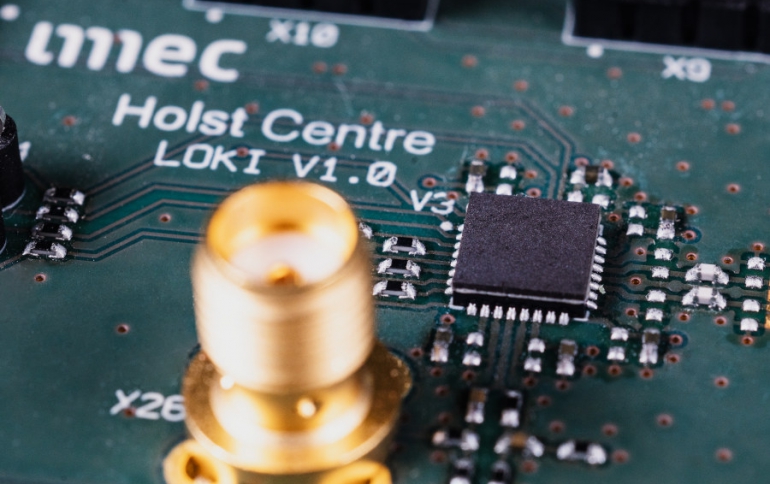
Imec Uses Machine Learning Algorithms in Chip Design to Achieve cm Accuracy and Low-power Ultra Wideband Localization
Imec expands its secure proximity research program (for secure and very high accuracy ranging) with next-generation high-precision and low-power ultra wideband (UWB) technology.
Imec has been rallying experts in hardware and software to develop next-gen UWB technology that achieves a ranging accuracy of less than 10cm in challenging environments while consuming 10 times less power than today’s implementations. The technology paves the way for micro-localization applications in a wide range of domains: from secure (keyless) access and AR/VR gaming to asset tracking and robotics.
Ultra wideband technology is suited to support a variety of high accuracy and secure wireless ranging use-cases. Think of the ‘smart lock’ solutions commonly used in automotive – automatically unlocking a car’s doors as its owner approaches, while locking the car when the owner moves away.
While UWB is inherently more difficult to compromise than some alternatives, its potential has largely remained untapped because of its higher power consumption and larger footprint.
“UWB’s power consumption, chip size and associated cost have been prohibitive factors to the technology’s adoption, especially when it comes to the deployment of wireless ranging applications,” explains Christian Bachmann, program manager for Secure Proximity and Sensitive Networks programs at imec. “For one, imec’s brand-new UWB chip developments result in a significant reduction of the technology’s footprint based on digital-style RF-concepts: we have been able to integrate an entire transceiver – including three receivers for angle-of-arrival measurements – on an area of less than 1mm².”
And it builds on imec’s expertise in secure distance bounding to increase the technology’s resilience to potential relay attacks,” he adds.
Imec’s approach to making UWB technology smaller, more cost-efficient and secure is based on digital-style RF-concepts, which also benefits implementation in advanced semiconductor process nodes. It is compliant with the new IEEE 802.15.4z standard supported by high-impact industry consortia such as the Car Connectivity Consortium (CCC) and Fine Ranging (FiRa).
Complementing these hardware developments, researchers from IDLab (an imec research group at Ghent University) have come up with software-based enhancements that significantly improve UWB’s wireless ranging performance in challenging environments. Think of factories or warehouses where people and machines constantly move around, and with metallic obstacles causing massive reflection – all of which impact the quality of UWB’s localization and distance measurements.
“Using machine learning, we created smart anchor selection algorithms that detect the (non) line-of-sight between UWB anchors and the mobile devices that are being tracked. Building on that knowledge, the ranging quality is estimated, and ranging errors are corrected. Since our approach also comes with machine learning enabled features that enable adaptive tuning of the network’s physical layer parameters, the right steps can then be initiated to mitigate those ranging errors – for instance by tuning the anchors’ radios,” explains Professor Eli De Poorter from IDLab.
“We have already demonstrated an UWB ranging accuracy of better than 10cm in such very challenging industrial environments, which is a factor 2 improvement compared to existing approaches. Additionally, while UWB localization use-cases are typically custom-built and often depend on manual configuration, our smart anchor selection software works in any scenario – as it runs in the application layer,” he adds. Through these adaptive configurations, the next-generation low power and high-accuracy UWB chips can be utilized in a wide range of other use cases such as improved contact tracing during epidemics using small & privacy-aware devices.
“While BLE has been a true game changer for wireless ranging applications, UWB now allows us to take the next step. It will pave the way for micro-localization services in a wide range of domains: from secure (keyless) access and AR/VR gaming to asset tracking and industry 5.0 applications."





















